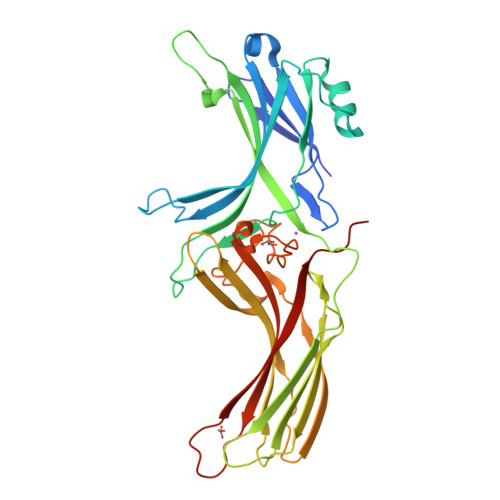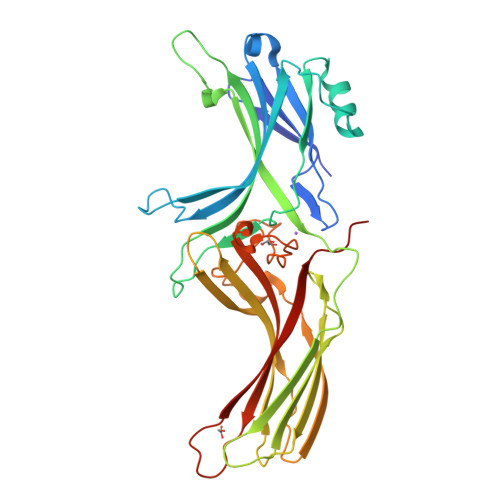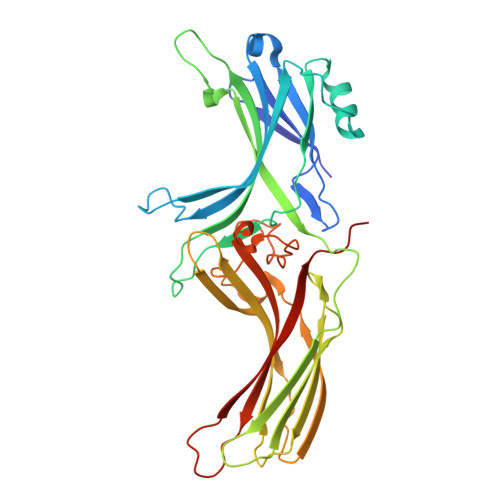Insights into the Activation and Self-Association of Arrestin-1.
Salom, D., Kiser, P.D., Palczewski, K.(2025) Biochemistry 64: 364-376
- PubMed: 39704710
- DOI: https://doi.org/10.1021/acs.biochem.4c00632
- Primary Citation of Related Structures:
9C6E - PubMed Abstract:
Arrestins halt signal transduction by binding to the phosphorylated C-termini of activated G protein-coupled receptors. Arrestin-1, the first subtype discovered, binds to rhodopsin in rod cells. Mutations in SAG , the gene encoding Arrestin-1, are linked to Oguchi disease, characterized by delayed dark adaptation. Since the discovery of Arrestin-1, substantial progress has been made in understanding the role of these regulatory proteins in phototransduction, including the characterization of visual phenotypes of animals and humans lacking this protein, discovery of splice variants, and documentation of its binding to inositol-polyphosphates. Arrestin-1 was one of the first structurally characterized proteins in the phototransduction cascade. However, there are knowledge gaps regarding the conformational intermediates leading to its binding to phosphorylated rhodopsin. Among various mammalian Arrestin-1 conformations captured via crystallography, the preactivated state is represented by the mutant R175E-Arrestin-1 and by a C-terminally truncated splice variant (p44). This report describes a novel purification method of Arrestin-1 from bovine retinas followed by limited proteolysis to obtain a protein resembling p44. We solved the crystal structure of this preactivated, shortened 3-367 Arrestin-1 at a resolution of 1.40 Å. The structure reveals a more complete picture of the finger loop structure and of the role of the polar core in the activation of Arrestin-1. The structure of 3-367 Arrestin-1 captures an intermediate form halfway between the inactive and fully activated conformations of Arrestin-1. Finally, we addressed the question of Arrestin-1 oligomerization by comparing the packing interfaces in different Arrestin-1 crystals and dimer models predicted by AlphaFold 3.
Organizational Affiliation:
Gavin Herbert Eye Institute - Center for Translational Vision Research, Department of Ophthalmology, University of California, Irvine, Irvine, California 92697, United States.



















